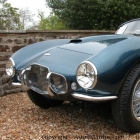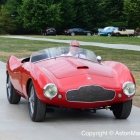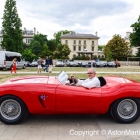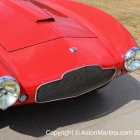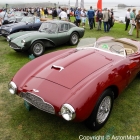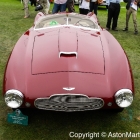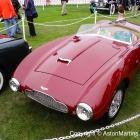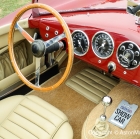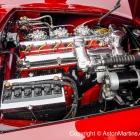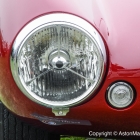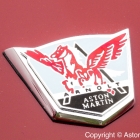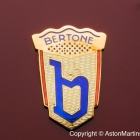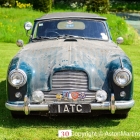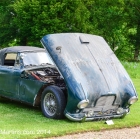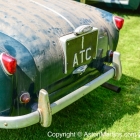DB2/4 Spider by Bertone
- 01/02/2013LML/505
Whilst chassis LML/502 and LML/507 were minimalist stripped out barchettas, LML/505 has the addition substantial overriders in the grille, full height windscreen plus front and rear bumpers. The rolling chassis originally had the 2.6 litre engine, but by the time that the bodywork and trim was completed in Italy, it appears that all chassis had received the more powerful 2992cc Vantage tuned engine, capable of producing 140 bhp. I first saw LML/505 at Andre Blooms Thoroughbreds in the Spring of 2000 whilst finished in light blue. Subsequently 505 has recently been fully finished to a concourse standard and was exhibited at the AMOC spring concourse at Woburn Abbey in May 2004. Not surprisingly, with 98.5 points, the car won outright the Feltham class. At Pebble Beach in 2007, LML/505 claimed third place in the Class for Aston Martin Post-war Coachbuilt Cars. As of Summer 2013, the car on display in the Blackhawk Collection, Danville, California.
LML/507
Chassis LML/507, with it’s totally red coachwork, was shown at the Kensington Palace Centenary Celebrations in July 2013. It still carries the ‘Arnolt Aston Martin’ badges that caused David Brown some upset and possibly in part led to AML ceasing to supply roiling chassis to independent coachbuilders. It is in remarkably original condition and is a credit to the owners of the past 60 years.
LML/502
Chassis LML/502, in Rosso Bordeaux, is shown taking part in the 2013 Pebble Beach Tour and the Concours d’Elegence. It is without doubt a 100 point Aston Martin and was 1st in the Aston Martin Centenary Class at Pebble that year.




